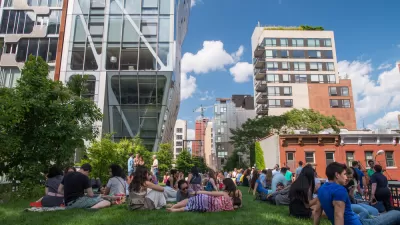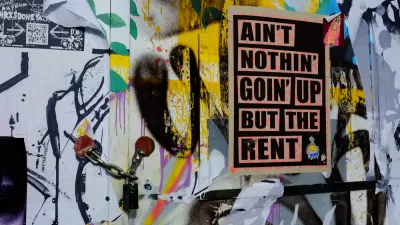Richard Florida discusses why "quality of place", rather than job opportunity, is the determining factor in where creative-minded people choose to live.
Although "quality of life" has been the traditional way in which the success of a community has been defined, Florida argues that "quality of place," a term he coined to capture "an interrelated set of experiences," better explains the attractiveness of a location. He believes that the creative class chooses where to live based not simply on jobs and services, but on a much wider range of "Territorial Assets" - comprising "what's there," "who's there," and "what's going on."
"Creative-minded people enjoy a mix of influences," writes Florida, "They want to hear different kinds of music and try different kinds of food. They want to meet and socialize with people unlike themselves, to trade views and spar over issues." He notes that "authenticity - as in real buildings, real people, real history - is key." The creative class wants a quality of place unique to the location, not "full of chain stores, chain restaurants, and chain nightclubs."
The openness to experience sought by creative-minded people reflects his contention that "what people want is not an either/or proposition. Successful places do not provide just one thing; they provide a range of quality-of-place options for different kinds of people at different stages in their lives." Florida uses New York City as an example of a successful place because young people, as they earn more and start families, can trade up from affordable, funky neighborhoods to more costly, even suburban, communities. "Members of the Creative Class come in all shapes, sizes, colors, ages, and lifestyles. To be truly successful, cities and regions must offer something for all of them."
FULL STORY: What Draws Creative People? Quality of Place

Alabama: Trump Terminates Settlements for Black Communities Harmed By Raw Sewage
Trump deemed the landmark civil rights agreement “illegal DEI and environmental justice policy.”

Planetizen Federal Action Tracker
A weekly monitor of how Trump’s orders and actions are impacting planners and planning in America.

The 120 Year Old Tiny Home Villages That Sheltered San Francisco’s Earthquake Refugees
More than a century ago, San Francisco mobilized to house thousands of residents displaced by the 1906 earthquake. Could their strategy offer a model for the present?

In Both Crashes and Crime, Public Transportation is Far Safer than Driving
Contrary to popular assumptions, public transportation has far lower crash and crime rates than automobile travel. For safer communities, improve and encourage transit travel.

Report: Zoning Reforms Should Complement Nashville’s Ambitious Transit Plan
Without reform, restrictive zoning codes will limit the impact of the city’s planned transit expansion and could exclude some of the residents who depend on transit the most.

Judge Orders Release of Frozen IRA, IIJA Funding
The decision is a victory for environmental groups who charged that freezing funds for critical infrastructure and disaster response programs caused “real and irreparable harm” to communities.
Urban Design for Planners 1: Software Tools
This six-course series explores essential urban design concepts using open source software and equips planners with the tools they need to participate fully in the urban design process.
Planning for Universal Design
Learn the tools for implementing Universal Design in planning regulations.
Clanton & Associates, Inc.
Jessamine County Fiscal Court
Institute for Housing and Urban Development Studies (IHS)
City of Grandview
Harvard GSD Executive Education
Toledo-Lucas County Plan Commissions
Salt Lake City
NYU Wagner Graduate School of Public Service




























